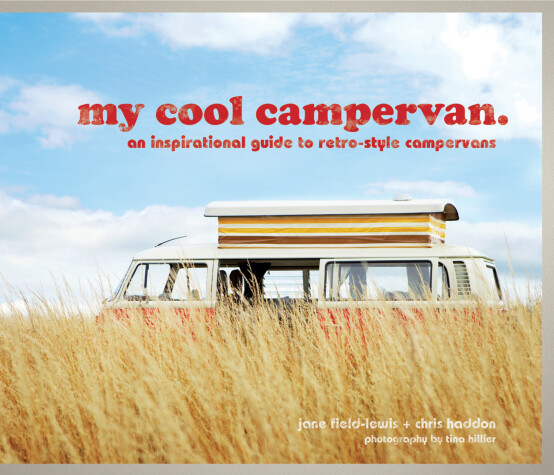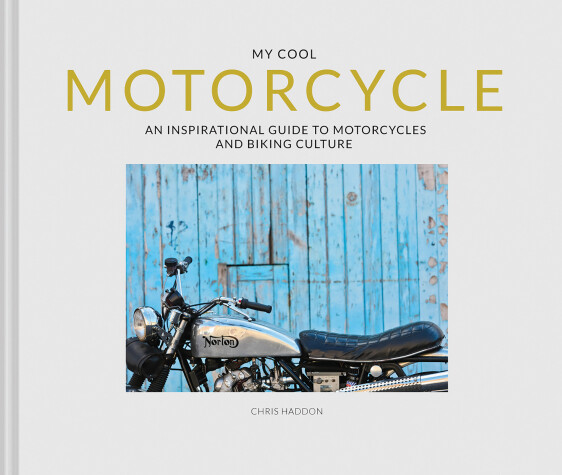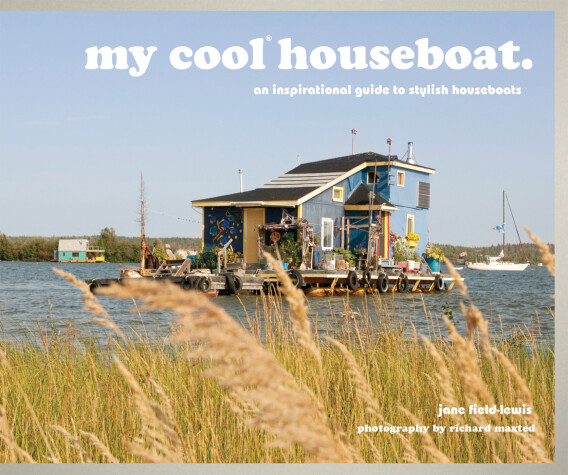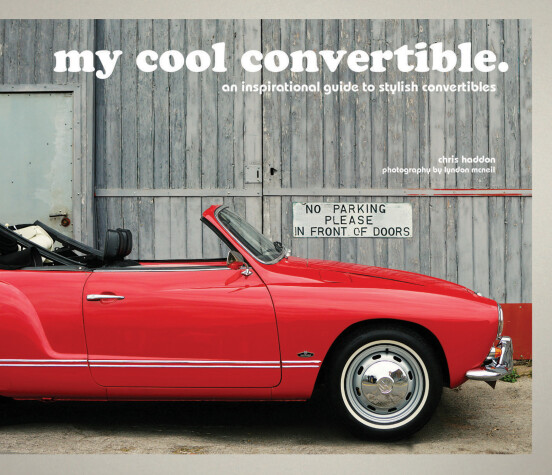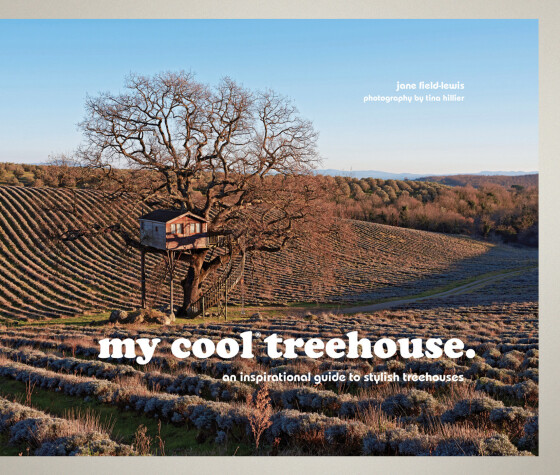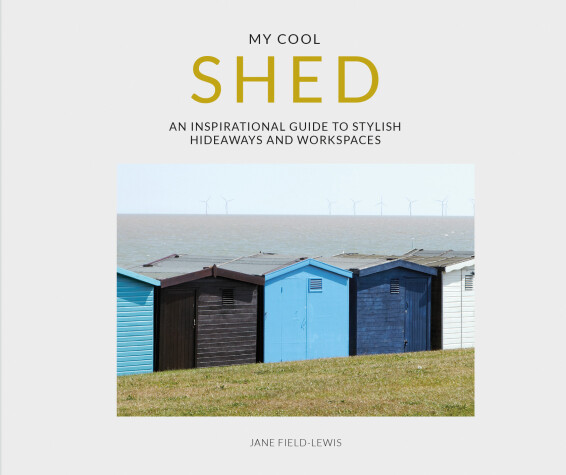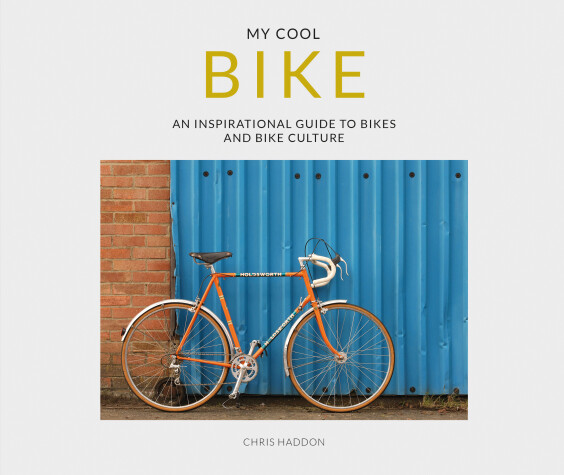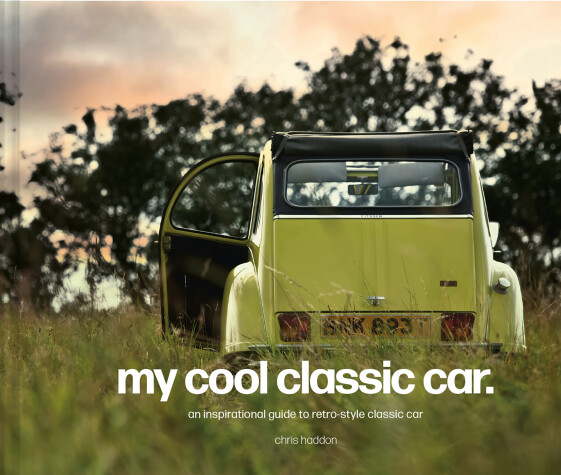My Cool
11 total works
My Cool Campervan celebrates a new wave of interest in modern-retro campervans.
Join Jane Field-Lewis and Chris Haddon as they set off on a 3500-mile trip to locate campervans and proud owners, sharing their memories of family holidays under candy-striped pop-top roofs and of sunny days and simple pleasures. Delve into a world of road-tripping as Jane and Chris introduce us to a succession of distinctive campervans, memorable locations and classic models, at times beautifully restored, and at others well-loved and well-used.
My Cool Campervan reveals a world beyond the stereotype, of vintage vans from another era, forgotten rarities and beautifully restored mass-produced models.
Chapters include:
Old Retro: In the 1970s and 80s as the motor industry turned its sights towards the global market, campervan designs began to change.
Simple Life: Exploring functional campervans where styling doesn’t overwhelm function and where vans are so well designed in the first place, there’s nothing more to add than the journey.
Weird and Wonderful: From a converted French fire truck, to an ‘extension’ to a regular saloon car, these campers are customized, unusual and have been created to provide space.
American Beauties: The large American Recreational Vehicles, or RVs, fulfill just about everyone’s expectations of a comfortable life on the road. The enduring appeal of the RV lies in its iconic design and long association with the romantic notion of the great road journey.
Classics: Some vehicle designs last longer than others. The VW T2 campervan is, without doubt, the front runner.
New Retro: Reflecting owners’ unique styles and interest, the vehicles here function as an artist’s workroom or as a photographer’s studio; these are not only places to camp out or chill out, they are happy extensions of creative lives.
The motorcycle can lay claim as the most influential form of mobility becoming the embodiment of liberation and rebellion; never more so than in the 50s and 60s with the era of rockers, ton-up boys, the 59 Club and cafe racing.
My Cool Motorcycle celebrates a love affair with motorcycles and the strong culture within the tight-knit community. Explore how the origins of the era of motorcycle subculture have lived on, through the fashions and spin-off cultures that this versatile machine has spawned. Looking back across a hundred years of the motorcycle, My Cool Motorcycle charts iconic makes and sought-after classics, along with a cross-section of passionate owners.
Chapters include:
It’s a Keeper: Exploring the irreplaceable and sentimental bond that determines a motorcycle as being 'a keeper’ whether its a cherished motorcycle being handed down generations, or a garage find sure to generate your own curiosity for local garages.
The Wider Picture: Looking beyond stories of traditional ownership and exploring the motivations of individuals who take motorcycling one stage further.
Diversity: Consider how some people choose to push aside conformity and extend the boundaries of their chosen path, adapting their persona and how they choose to live their life through fashion, hobbies, culture and, crucially, motorcycle ownership.
Retrospective: The 1960s saw a dramatic shift in motorcycle ownership and the onset of the 1970s saw the biggest boom in motorcycle sales with everyone seemingly opting to take to the roads. This chapter is an opportunity to take a retrospective look at the exciting motorcycles indicative to this era of change.
Celebrating the wave of interest in modern-retro caravanning, this is a visual voyage into this stylish world and an idiosyncratic sourcebook for the design-conscious. Featured caravans include retro classics as well as mass-produced models from the 1960s onwards.
"A beautifully shot celebration of classic vans from around the world...complete with style notes on how to achieve that period look."
--Drive magazine
In terms of public image, the scooter has long played second fiddle to the motorcycle. Of course, there is a large dose of stereotype in the readings of both kinds of machines and at heart both have provided the same thing: escape, independence, mobility and a certain kind of cool. Following on from Chris Haddon's highly successful my cool motorcycle, my cool scooter showcases beautiful scooters from all corners of the world and celebrates the scooter's history thus far.
The humble scooter is much more than a mode of transport – it is fashionable, stylish and trendy. As many of the stories featured in this book demonstrate, owners take their scooters on miraculous adventures from city streets to glorious country escapes. The book explores the most iconic brands of scooter from the well-known Vespa to the classic Goggo. Each section covers a selection of historical information, owners' stories and vehicle notes. For scooter owners or those interested in scooter history this book will inspire and intrigue readers.
About 15,000 people live permanently afloat on canals, rivers and coasts in Great Britain alone, but thousands more enjoy holidaying on boats or own them as weekend retreats in the UK and abroad. This book will feature not only static residential boats and floating dwellings but also those used as holiday homes and funky modern businesses – houseboats can range from canal boats, riverboats, narrow and wide beam boats, barges, Dutch barges, static houseboats and even seaworthy cruisers moored in marina. The book will cover stylish boats from the UK, North America, Europe and Australia.
The houseboats engage the reader through their history and owners’ stories, which are told in lively text and colourful images. People fall in love with boats and own them for a variety of reasons: out of affordability and necessity; a love of the water; closeness to nature and the environment; or just because they yearn for a different and more relaxed style of living/working space. This book shows how houseboats can offer an attractive, practical and alternative solution, as well as amazing and often idiosyncratic solutions to living successfully in a small space.
My cool houseboat covers the following themes: stylish architectural, from San Francisco to Prague; thrifty and eclectic, as an affordable solution to conventional city dwelling; businesses, using houseboats as unusual workspaces, from a book barge to an allotment; modernist, from a Finnish floating office to an Amsterdam watervilla; recycled, ranging from an Ellis Island ferry houseboat to a converted minesweeper; and soulful, covering alternative ways of life, relaxation and recreation, from a New York City houseboat to a stylish Paris home.
Word count: 25,000
This latest title in the highly successful ‘my cool’ vehicle series covers the world of open top motoring. Cruising in a convertible car with the top down started out as an American summer tradition and for many drivers around the world there is nothing better than driving down a country lane with the roof down, the wind sweeping your hair and the sun beating on your neck.
The book includes a broad mix of ‘cool’ convertibles, and their owners, from vintage to classic and modern, with eye-catching photography and locations, captured by specialist car photographer Lyndon McNeil. Convertible cars come in all shapes and sizes from compact city cabriolets such as the Talbot Samba to roadsters such as the Lotus Elan Sprint and grand tourers such as the Aston Martin DB6. Every one of them enjoys a sense of open-air freedom and greater involvement in the driving experience. Think sun, wind and speed. In many ways, the convertible car is the ultimate expression of automotive indulgence. A car with a roof is sensible but a car without a roof is sexy, scintillating and, given the chance, most of us would pay through the nose to own one.
From the timeless designs of early models (Lagonda, Rolls Royce Phantom II Continental, Frazer Nash BMW and the MG) to the mid century cars (Nash Metropolitan, Land Rover, Bristol and Renault Caravelle) and the retro/modern (Saab 900, Honda S800, Peugeot 304, VW Golf, Mercedes 380SL and Porsche 914), convertibles are among the most popular and desirable of cars. The convertible has gone through extreme highs and lows during more than a century of automotive history, from near ubiquity at the dawn of the car industry to nearly disappearing in the 1970s; and now once again being a highly popular type of car. The cars featured illustrate the highs and the lows of convertible design and show how convertible technology advanced from simple cloth tops (the 1931 Rolls Royce Phantom II Continental is an early example) to the advanced self-folding roofs of today and many other design features. Some of the most stylish marques are included: the most expensive in the book is the Frazer Nash BMW and the rarest the Fiat 1100 Barchetta.
Word Count 25,000
Treehouses have always been a symbol of imagination and adventure, but despite the traditional stereotype, treehouses are not just for children and children's stories. Well built and in the right spot, they can add real value to your home and lifestyle. Beloved for centuries as ramshackle palaces of backyard escape and fun, the modern-day treehouse has evolved from more traditional structures, in the process morphing and expanding its agenda to capture the heart and soul of a new breed of acolytes. Versatile and endlessly adapting, it gives us a unique opportunity for creative expression and an individualistic challenge. It enables us to build on ‘unbuildable’ plots, create unusual business models and even use it as a form for art installations.
Using high-end interiors, landscape and lifestyle photography and styling in the specially commissioned images (photographed in all seasons and weather conditions), the book includes 35 treehouses with different budgets and styles, from the rustic that seem to disappear into the foliage to the futuristic made out of contemporary materials. Embracing a world-wide approach, the seeds of inspiration in this book come from far and wide: from contemporary minimalist treehouses, recycled urban structures in backyards, bespoke Welsh hideaways and glass walls in the African wilderness to cabins perched on trees in the scented lavender fields of southern Italy. Creativity and vision definitely anchor each and every one of them firmly to the ground. The accompanying narrative for each of these projects will give information about the location, the owners and their inspiration as well as style notes.
Word count: 25,000
Fuelled by passion, nostalgia and perhaps eccentricity over necessity, Chris Haddon unveils often overlooked and garage-dwelling cars and introduces you to the worlds’ most classic cars and their owners.
Some are immaculate, while some come with rust, but regardless of age and value, they are regularly used, loved and clock up an impressive mileage.
Cast your mind back to a time of car design when individuality was a selling point and manufacturers dared to be different. My Cool Classic Car explores quirky design aspects, big and small, good (or bad) handling traits and humorous, slightly haphazard approaches to solutions. In all cases, My Cool Classic Car embraces manufacturers’ individuality and the trends of the era.
My Cool Classic Car allows us to pause, think and reconnect with a time when dashboards and interior spaces were art forms in their own right.
Chapters include:
Beloved: Read about treasured cars packed full of memories that will never have a selling price, such is the connection between owner and vehicle.
Retro: Lose yourself in nostalgic time capsules with styling, colours and materials driven solely by inspirations and fashions of the time.
Glory Days: Who wouldn’t want to return to fast-paced times when automotive design was in its prime? Explore a snapshot of deliberate extremes in car design from around the globe.
Classic Eccentrics: From a well-used Model T Ford, to an iconic DeLorean, step away from the ordinary and embrace individuality through eccentricity.
Sports: Sports cars are all about the driving and the enjoyment it brings. Think simplistic designs, sleek lines and long curves.
